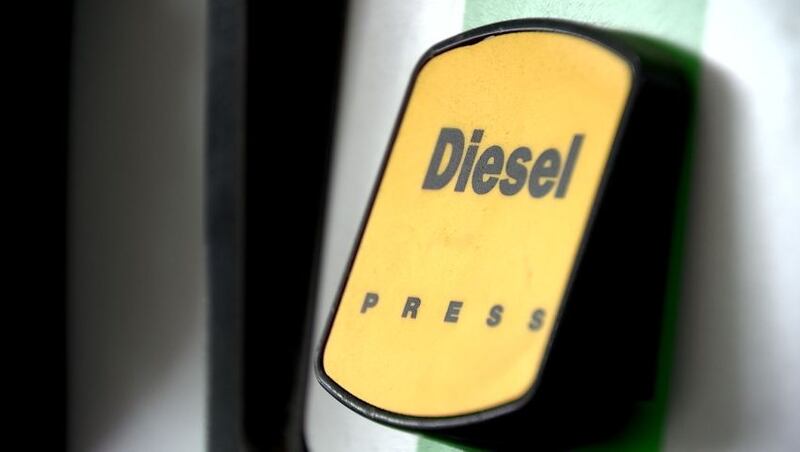Diesel prices hit nationwide record highs Monday, raising costs for supply chain transit companies and consumers.
The nationwide average cost for a gallon of diesel fuel hit a new record Monday, a staggering $5.32 — marking a $2.20 increase over averages seen in 2021.
In the state of Washington, it is even higher, at $5.57. Prices in densely populated areas outside the state are even higher.
The average price per gallon for diesel sits at $5.71 in the Seattle-Bellevue-Everett region, and $5.60 in Tacoma.
At a gas station near the Space Needle, a gallon of diesel now costs $5.89. And at a gas station near the First Street Bridge, it is as high as $5.99.
The numbers are part of a growing trend of a spike in fuel costs. According to the Consumer Price Index, the United States saw a more than 18% increase in costs of fuel over the month of March, the most recent month with available data.
So, what’s causing diesel prices to spike? According to the U.S. Energy Information Administration, the retail price of a gallon of diesel reflects the costs and profits (or losses) of producing and delivering the product to consumers.
EIA uses four factors to evaluate that: the cost of crude oil purchased by refineries; refining costs and profits; distributing, marketing and retail station costs; and profits and taxes.
Right now, those base costs are going up because of shortages and sanctions.
The industry was already facing a supply shortage because of a drop in global refining capacity due to COVID-19.
Then, it was exacerbated by sanctions on Russian fuel exports to Europe, which sent the global market scrambling for the already limited supply — ultimately, driving up prices.
Graham Trucking in SeaTac has been hit hard by the increase. The local company is paying double the amount that it did at the beginning of 2021 — just to fill its fleet.
“It’s been crazy,” said Graham Trucking manager, Troy Graham.
Troy said the business has 100 trucks in its fleet. Each truck has a 150-to-200-gallon tank and, at the current price of diesel, costs between $800 and $1100 to fill up.
This means it costs the company more than $80,000 to fill the fleet — something it must do multiple times a week.
“You’re not talking about a small amount of money, especially these days,” Troy said.
Nearly every aspect of the supply chain has been impacted by the increases. Trucks, trains, barges, and planes all rely on some type of diesel fuel for operation.
“The [price] swings are just hard to keep up with,” said Troy. “We’re sort of the beginning of it, but there’s trickle-down effects all through the economy from diesel prices.”
“We’re one very small link in the chain, right? So, everybody’s just figuring out a way to make this new norm work,” Troy continued.
The rising prices, in turn, contribute to inflation, which ultimately, comes back to the consumer.
“It makes me worried because I know [the cash loss] needs to be made up for somewhere,” said Troy. “I just don’t think that we’re done dealing with the effects of it being reflected in the pricing that’s ultimately passed down to the consumer.”
Current economic projections on the price of diesel from EIA show prices will continue to increase throughout 2022 and begin to taper off in 2023.
©2022 Cox Media Group








